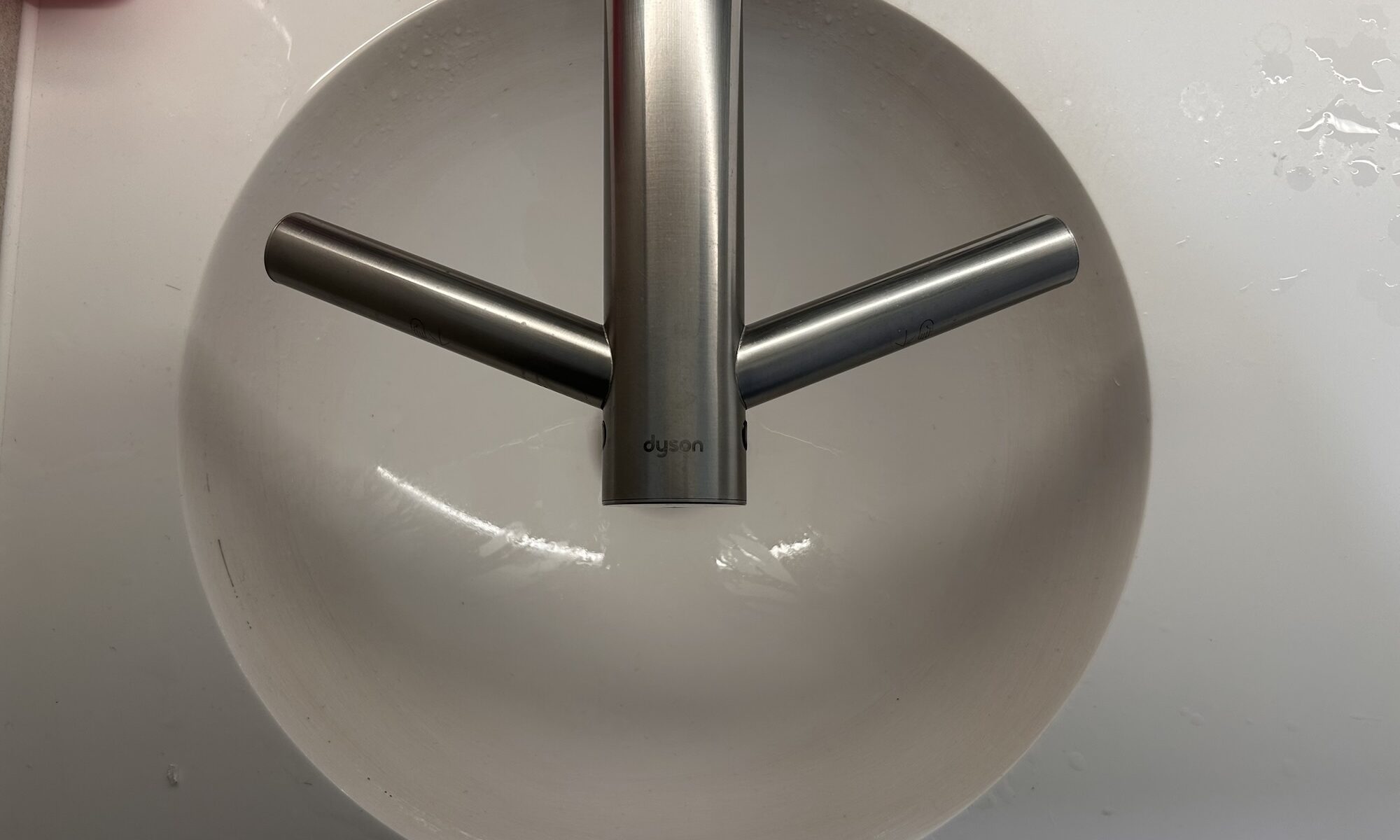One of my favourite design features at the Barbican Arts Centre is in the loos: a row of round sinks, set into polished concrete, with taps activated by foot pedals. It’s elegant, low-tech, and fun to use.
It got me thinking about bathroom design more generally — and how, every now and then, designers like to reinvent the tap.
Which brings me to the Dyson Tap. Water and hand-dryer in one. Sleek, modern, cropping up in more and more public toilets, and every time I use one, I get it wrong.
These newer designs are often accompanied by diagrams on the wall explaining how to wash your hands. That’s a warning sign. A well-designed object shouldn’t need instructions — it should feel instinctive, especially for something as routine as a tap.
We’re used to how taps work: anticlockwise for on, clockwise for off, hot on the left, cold on the right. This cultural code runs deep. And when a design ignores it, it has to work even harder to be intuitive.
But here, nothing is familiar. The shape suggests “dry now” before I’ve even washed. Then I trigger the dryer accidentally mid-wash.
Then I try to find the soap. A different machine. Often it’s not working, and someone’s helpfully plonked a bottle nearby (you can just see the pink glow of one in this photo).
It makes me wonder: what problem is this trying to solve? Maybe a regular tap would be simpler, more durable, lower in embodied energy — and a better cultural fit.
Which takes back to the foot-operated taps at the Barbican. These were different but didn’t have a instructions. Somehow, this new design must have just worked.

